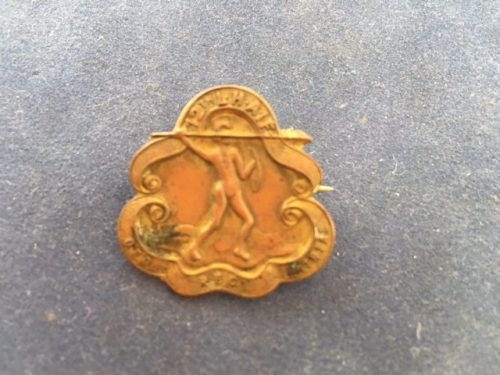Description
Description: 10th Australian Light Horse unofficial opposing collar badge
Maker’s Name: Gaunt
Condition: Very Good
Comments: 10th Australian Light Horse unofficial collar badge. These were made in either England or Egypt and were purchased via regimental funds. Now very scarce and highly desirable. Single pin has replaced lugs.
This one is guaranteed 100% authentic.
The 10th Australian Light Horse Regiment AIF was the only AIF light horse regiment recruited in Western Australia during the First World War.
The regiment was raised in October 1914 when it became apparent that Western Australia could provide more than a single squadron of mounted soldiers. The regiment joined the 3rd Light Horse Brigade in Egypt and served dismounted at Gallipoli. The regiment’s most famous actions were the charge at the Nek on 7 August 1915, and Hill 60 on 29-30 August. It was in this last action that Lieutenant V.H. Hugo Throssell performed the valorous deeds for which he was awarded the Victoria Cross. He was the only Australian light horseman to be so decorated during the Great War.
After the withdrawal from Gallipoli in December 1915 the regiment was bought up to strength and reorganised. With the rest of the Australian light horse they defended Egypt from the Ottoman Army advancing on the Suez Canal. Through 1916 they drove the Turks across the deserts of Sinai, participating in the battles of Romani and Magdhaba.
In 1917 they were part of the Desert Column that advanced into Palestine. The regiment participated in the bloody battles to break the Gaza-Beersheba line and helped capture Jerusalem. They participated in the Es Salt Raid in May 1918. In August they were one of the regiments re-equipped with swords and rifle boots, and retrained to take a more orthodox cavalry role. In their new role they took part in the rout of the Ottoman army in the Jordan Valley, a campaign the light horse referred to as The Great Ride. In September the 10th was the first formed regiment to enter Damascus.
Turkey surrendered on 30 October 1918. After the end of the war, elements of the regiment saw action in putting down the Egyptian uprising of 1919. They were finally disbanded in 1920.
.







